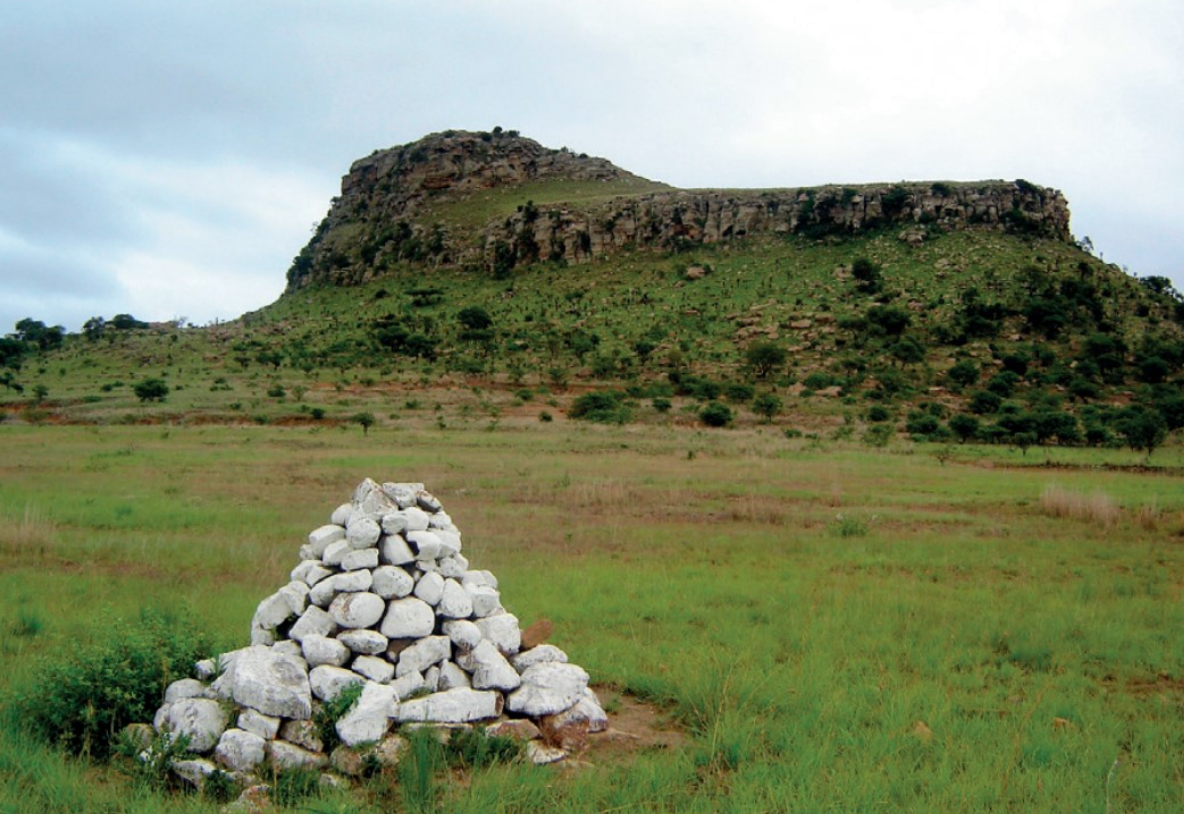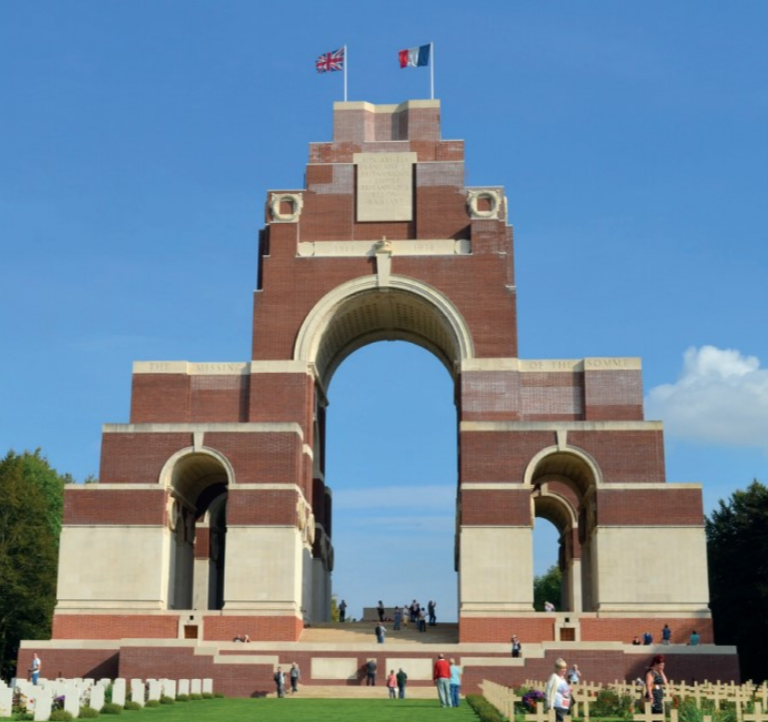War memorials
Remembrance can not be taken for granted: the creation and conservation of war memorials, and agreeing the principles on which they are based, is a challenge for every generation.

|
| Bodies were buried in mass graves after the British defeat at Isandlwana in 1879. |
My interest in war memorials stems from a career in the army. Having seen sacrifice at first hand I strongly believe that if we are to send our young men and women to war, we as a nation should remember the sacrifice that many have made and continue to make.
This interest continued when I left the army and became CEO of a charity in Leicestershire. Thinking of how my charity was to support rural communities in their own commemoration of the 100th anniversary of the first world war, a bid to the Heritage Lottery Fund was submitted which led to the start of a series of presentations under the umbrella title of ‘Sacrifice and Remembrance’ (www.sacrificeandremembrance.com).
The custom of commemorating the fallen in conflicts with war memorials and headstones is a relatively new occurrence, emanating mainly from the horrific casualties experienced in the first world war.
There was little respect for the fallen at the Battle of Waterloo (1815), where bodies were pillaged, mainly for their teeth, and burnt on funeral pyres. In the aftermath of the terrible defeat the British suffered in the Anglo-Zulu War at Isandlwana in 1879, bodies were buried but in mass graves, with no individual recognition of who lay in each grave. At the Battle at Spion Kop in the second Boer War in 1900 bodies were again buried in mass graves, but attempts were made to commemorate some of the names of the fallen on war memorials.
The scale of the sacrifice in the first world war, particularly on the western front, presented the War Office with a real problem in dealing with the logistical problems of how to deal with death at such unprecedented levels. On the first day (1st July 1916) of the Battle of the Somme 19,240 British soldiers were killed; losses on one day that have not occurred on such a scale before or since.
Solutions such as creating mass graves behind the front line were mooted but dismissed as relatives sought to be informed where their loved ones were buried to allow them to pay their respects. In the early days of the first world war the registration of the fallen was in its infancy, but at least efforts were made to record where soldiers were buried with temporary wooden crosses.
It was Fabian Ware, in charge of the Red Cross Mobile Ambulance Service, who realised the importance of commemorating the fallen. He managed to enlarge the mission of his unit to not only caring for the wounded but recording and registering where the dead lay. The Imperial War Graves Commission (IWGC) was thus formed.
Like all good leaders he surrounded himself by a team of experts. Sir Frederick Kenyon, director of the British Museum, was responsible not just for the layout of the cemeteries but for the founding principles of the IWGC. It was agreed that each of the dead should be commemorated individually by name, either on the headstone on the grave or by an inscription on a memorial; that the headstones and memorials should be permanent; that the headstones should be uniform; and that no distinction should be made on account of military or civil rank, race or creed. Everyone who died in service was to be commemorated either by a name on a headstone or a name on a memorial.
The repatriation of the body of Lt William Gladstone, whose grandfather was the Liberal prime minister, from a cemetery near the Battle of Loos in 1915 to his family burial plot in Wales caused considerable anguish in the IWGC. Fabian Ware asked why one family with the means to do so should be able to repatriate the body of a relative while others less fortunate could not. In the interests of uniformity another principle was subsequently added to the others: the fallen should be laid to rest near where they died.
These principles caused enormous anger among the public, who questioned why a war was fought when the basic rights of a family to choose how to lay to rest their loved ones were being denied. A petition of 8,000 signatories drawn up by Lady Cecil, the Bishop of Exeter’s wife, who lost three sons in the first world war, was sent to the Prince of Wales. The principles were debated in the House of Commons and, although the decision was split, it was agreed to let the cemeteries be built as outlined by the IWGC.
There are over 587,989 named headstones on the western front. Those bodies that were not identified (and there are some 187,000 of these) were given a headstone with the wording provided by Rudyard Kipling: ‘A Soldier of the Great War – Known unto God’. How to commemorate the missing (numbering 338,955) created considerable debate in the IWGC. It was suggested that dummy graves be created with the headstone recording the name of the missing. This idea was rejected by Fabian Ware, who felt that it would give false hope to the relatives. Instead the names of the missing are found on walls in selected cemeteries, with the Thiepval Memorial, the largest memorial, created by Edwin Lutyens, commemorating over 72,000 missing from the Somme.
The IWGC, which changed its name to the Commonwealth War Graves Commission (CWGC) in 1960, commemorates the 1.7 million fallen in two world wars across 153 countries in 26,000 sites. There are 305,806 memorials for the first and second world wars in this country alone. Those killed in recent conflicts are commemorated with similar headstones which are now maintained by the Ministry of Defence. It was very much up to communities to choose their own way of commemorating the fallen. Many chose war memorials that were in the main paid for by public donations. Not all memorials were well received, with the Vietnam War Memorial in Washington a case in point. After its unveiling in 1982 many veterans were horrified that the sacrifice of over 58,000 in that war could be commemorated by a black wall partly hidden from view in the ground: one described it as ‘a monument to defeat, one that spoke to a nation’s guilt rather than to the honour of the war dead and the veterans, a black gash of shame, the degrading ditch and a wailing wall for draft dodgers’. Since then this memorial has proved to be an iconic focus for the nation, with relatives gaining much comfort in seeing and feeling the inscribed names of their loved ones on a wall that is deliberately low-key in its design.
The repatriation of the fallen first started after the Falkland War in 1982, with relatives of those killed being given the option of the bodies being repatriated or having them buried in the Falkland Islands. The majority chose the former, with 64 bodies being repatriated and only 15 buried in the Falkland Islands.
Remembrance can not be taken for granted, particularly as time passes and people forget the sacrifice made by previous generations. In 1970, when the Stock Exchange premises was demolished, its war memorial, which commemorated over 600 employees who fell in the Boer War and the first and second world wars was removed and placed into storage at a stone-masons yard in London. Since then the Stock Exchange has moved a number of times and clearly its new home at Paternoster Square could not accommodate the original memorial. Knowing my interest in war memorials, a lady in Leicestershire approached me in 2014 to help her in lobbying for its restoration. Three years later, after much correspondence and many meetings, it was a privilege to be at the unveiling of the new memorial, which was unveiled on 14 November 2017.
Whether a war memorial is just a board recording the names of the fallen or as grand as the Thiepval Memorial, it conveys the same message that young people left their communities never to return. An inscription on a war memorial in America conveys this powerful message of the sacrifice so many have made in war: ‘we were young, we have died, remember us’.

|
| The Thiepval Memorial commemorates over 72,000 missing from the Somme. |
This article originally appeared as ‘War memorials: sacrifice and remembrance’ in IHBC's Context 161 (Page 51), published by The Institute of Historic Building Conservation in September 2019. It was written by Jeremy Prescott, who served in the regular army for 26 years, seeing operational service in Northern Ireland and Oman, and reaching the rank of lieutenant colonel.
--Institute of Historic Building Conservation
Related articles on Designing Buildings
- Bletchley Park restoration.
- Caring for war memorials.
- Cemetourism.
- Conservation.
- Edwardian architecture.
- Edwin Lutyens.
- IHBC articles.
- Iraq, Afghanistan, Gulf War Memorial.
- Lincoln Memorial.
- Maunsell forts.
- Mausoleum.
- Memorials and public parks.
- Ossuary.
- Repairing the Hamilton Monument.
- Royal Ordnance Factories.
- Scheduled monument consent.
- Second world war heritage at sea.
- The Commonwealth War Graves Commission.
- The Dukes of Normandy and the second world war.
- The Institute of Historic Building Conservation.
- The restoration of Thiepval.
- UK's National Holocaust Memorial.
IHBC NewsBlog
IHBC Membership Journal Context - Latest Issue on 'Hadrian's Wall' Published
The issue includes takes on the wall 'end-to-end' including 'the man who saved it'.
Heritage Building Retrofit Toolkit developed by City of London and Purcell
The toolkit is designed to provide clear and actionable guidance for owners, occupiers and caretakers of historic and listed buildings.
70 countries sign Declaration de Chaillot at Buildings & Climate Global Forum
The declaration is a foundational document enabling progress towards a ‘rapid, fair, and effective transition of the buildings sector’
Bookings open for IHBC Annual School 12-15 June 2024
Theme: Place and Building Care - Finance, Policy and People in Conservation Practice
Rare Sliding Canal Bridge in the UK gets a Major Update
A moveable rail bridge over the Stainforth and Keadby Canal in the Midlands in England has been completely overhauled.
'Restoration and Renewal: Developing the strategic case' Published
The House of Commons Library has published the research briefing, outlining the different options for the Palace of Westminster.
Brum’s Broad Street skyscraper plans approved with unusual rule for residents
A report by a council officer says that the development would provide for a mix of accommodation in a ‘high quality, secure environment...
English Housing Survey 2022 to 2023
Initial findings from the English Housing Survey 2022 to 2023 have been published.
Audit Wales research report: Sustainable development?
A new report from Audit Wales examines how Welsh Councils are supporting repurposing and regeneration of vacant properties and brownfield sites.
New Guidance Launched on ‘Understanding Special Historic Interest in Listing’
Historic England (HE) has published this guidance to help people better understand special historic interest, one of the two main criteria used to decide whether a building can be listed or not.

















